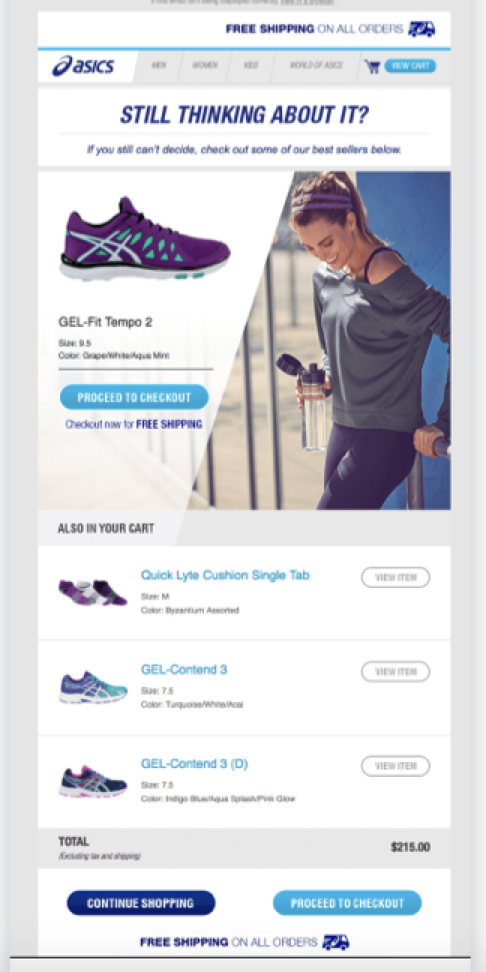
Four key factors that are framing the challenges for organisations going forward – Interview with Jo Causon of The Institute of Customer Service
July 31, 2020
Lessons learned from the move to remote working – Interview with Dean Robison of ServiceNow
August 7, 2020This is a guest post by Jay Purohit, a Digital Marketing Professional at Acquire.
Customer engagement can be defined as the ongoing relationship between a customer and a brand. But why is it important?
Well, data tell us that companies with the strongest customer engagement strategies retain more customers. According to a study, about two-thirds of a company’s profits depend upon active customer engagement. That’s also the reason why the C-Suite of forward-looking companies rates customer engagement as a top priority for all business initiatives.
Coming to customer experience, 91% of customers who have had a bad customer experience with a company prefer not to transact with it again, and 33% of Americans prefer switching companies after a single incidence of poor service.
As you can see, higher engagement is related to higher profits, while poor experience and service lead to attrition and lower revenue. This also means customer engagement is closely related to the overall customer experience as engaged customers share a better relationship with a brand and usually think twice before abandoning the ship.
But how do you gauge if your customers are engaged?
Customer engagement can be measured by your conversion rate, as highly engaged customers convert sooner and buy more, owing to the trust and relationship they develop with a brand. You can also analyze responses from the customer surveys, social media comments, and NPS score to understand what your customers feel about your brand. A higher NPS score means higher engagement and happier customers, which also boosts brand loyalty.
Top 3 Ways of Improving Customer Engagement
Brands that go beyond regular experiences genuinely delight their customers and better engage them. When faced with multiple choices, it is obvious that customers choose a brand they remember or one that made them happy, stressing on the importance of customer engagement to gain a competitive edge.
Below, we have shared three ways of improving customer engagement by going beyond the regular experience customers are accustomed to. Let’s dive in.
1. Send Follow-Up Emails
Most salespersons are wary of email follow up. Understandably, if a customer didn’t respond to the first communication, why would they respond to the next. However, this notion is unfounded in the world of sales.
In a study, it was found that the response rate of customers increased with every subsequent email. The company saw an 18% response rate to the first email and a 27% response rate to its sixth email. Another set of data indicates that most closed leads take multiple attempts to connect, with 93% responding after six communications from the brand in question.
Follow-up emails are undoubtedly good for your business, but not everything you write will click with your customers. Here are some tips for writing follow-up emails:
- State Your Goal – Before you write a follow-up email, be clear about your goals. The aim is to provide the lead with adequate information to move to the next step in the sales process. Some of the follow-up ideas include offering a product demo, proof of concept, seeking feedback, etc. Whatever is your goal, state it clearly in the email to ensure customers know what you want and respond accordingly.
- Cut The Clutter – Nobody has time to waste. Therefore, avoid beating around the bush by writing a crisp, goal-oriented follow-up email. The idea is to use short and simple sentences and avoiding bloat, like unnecessary adjectives and conjunctions.
- Add Value – Don’t catch up with customers for the sake of it. Instead, focus on providing value at each interaction through value-added offers, curated content like a case-study, webinar or other digital resources, user-generated content, etc.
- Include a Call-to-Action (CTA) – Without a CTA, your recipients won’t know what to do next. Avoid confusion and make it easier for your customers to respond by adding a clear CTA.

The above example is of a personalized follow-up by Asics. The shoe major keeps track of its customers’ purchasing activity and uses real-time marketing automation to send personalized follow-ups. So, if a customer puts something in the cart and does not buy, they will receive a personalized email to return to the site and complete the purchase.
2. Create Visual Engagement With Digital Tools
According to a Forrester Research Paper, companies can leverage visual engagement through solutions such as co-browsing to cut through the customer conversation clutter, be better understood, and connect emotionally. Unsurprisingly, businesses using visual engagement tools have reported an 83% increase in their annual revenue besides other positive outcomes.
Today, customers want fast and efficient service. However, at times, it is difficult to explain a technical solution via chat or call. Co-browsing technology is useful in such instances and improves customer communications significantly.
With co-browsing, you can onboard customers and resolve their problems as though you are sitting next to them. The technology allows you to securely access your customers’ screens to guide them in real-time and swiftly fix their issues. Customers can follow all the actions on their screen, which means they can also troubleshoot on their own in the future.
The best part about modern co-browsing solutions is that they come integrated with live chat and don’t require any additional downloads or installs. Through visual instruction, co-browsing also makes it easier to guide visitors on your site. For example, HDFC Life Insurance successfully used Acquire’s co-browse functionality to improve customer engagement. With co-browsing, they could visually direct customers to relevant policy features and fill application forms quickly, decreasing the operating time by 50% while boosting sales.
3. Engage Customers to Build User Generated Content (UGC) For Social Proof
Happy customers add to your company’s bottom-line through sales and act as effective mouthpieces to promote your brand. Think about it – when you are making a purchase decision, who would you trust more; brand advertisements or real users that have tried the product? The latter seems to be the most apparent answer with word of mouth marketing impressions resulting in 5x more sales than a paid media impression.
But how do you get your customers talking about your brand publicly? The simple answer is creating marketing campaigns that focus on generating UGC, such as asking users to share candid pics on Instagram. Take the example of Adobe that uses the hashtag #Adobe_Perspective to encourage and source content from regular software users. Adobe also hosted a Pride Month-themed UGC campaign (#Adobe_InColor) to engage users by encouraging them to showcase their talent while also supporting a social cause.

Conclusion
Today, customer experience has emerged as a critical differentiator for businesses, leading to a shift from customer acquisition to customer engagement for better growth and sustainability. By focusing on innovative ways to engage customers, brands can build deeper relationships and boost loyalty, leading to reduced churn and repeat sales, which are essential for business growth.
This is a guest post by Jay Purohit, a Digital Marketing Professional at Acquire.
About Jay
 Jay Purohit tries to comprehend tough concepts and putting them like butter on the bread for you to relish. He is a Digital Marketing Professional at Acquire with a keen interest in reading, researching, and sharing insights about trends in the field of Customer Experience, SaaS, and Automation. Passionate for Travel, Sports, and Content Marketing.
Jay Purohit tries to comprehend tough concepts and putting them like butter on the bread for you to relish. He is a Digital Marketing Professional at Acquire with a keen interest in reading, researching, and sharing insights about trends in the field of Customer Experience, SaaS, and Automation. Passionate for Travel, Sports, and Content Marketing.
Image by WAQAR AHMAD from Pixabay




